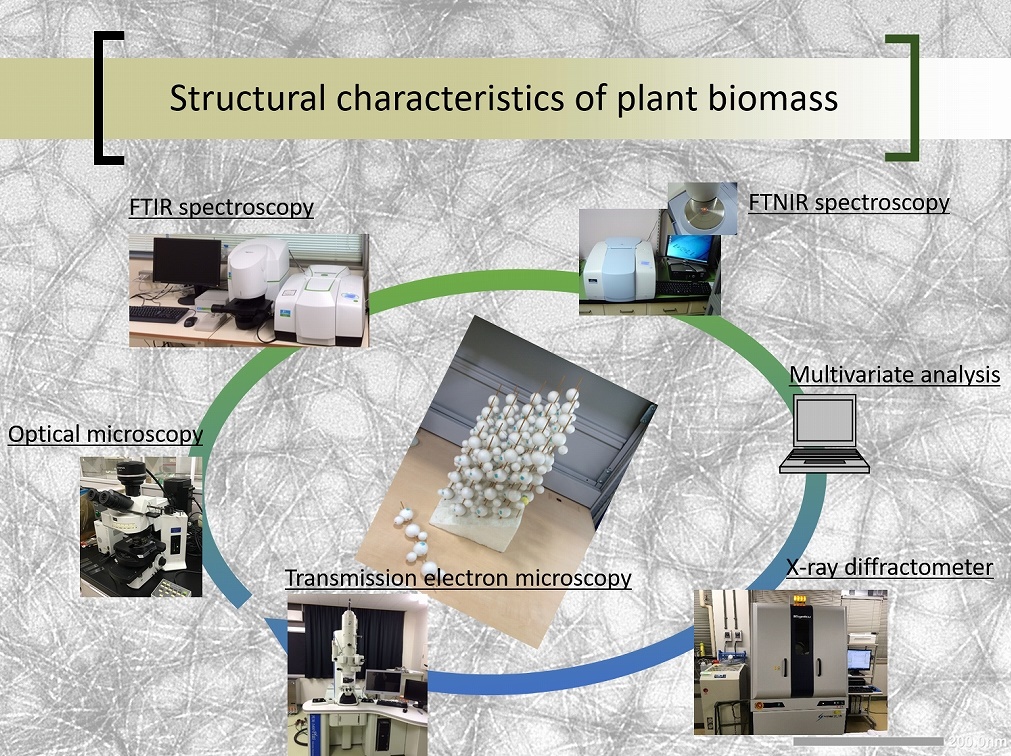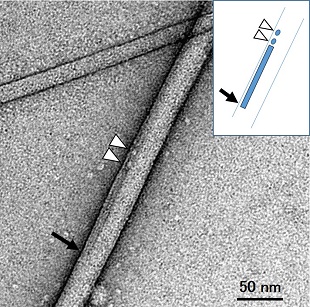Microstructural analysis of plant cell wall for better biomass utilization

Research members: Yoshiki Horikawa PhD.
Research fields: Forest and forest products science, Biological Science, Materials chemistry
Departments: Institute of global innovation Research
Keywords: Biomass, cell wall, cellulose, biodiversity
Web site:
Summary

Large consumption of fossil fuel resulted in depletion of resources and globally changed the environmental condition; in addition, Japan had big damage by radioactive contamination, which makes us reflect on the reliability of science and technology, and requires renewable as well as safety sources. Wooden biomass, satisfying the abovementioned requirements, has an advantage in that carbon resources are accumulated as trees in forest and we can use them anytime we need. Usage of wooden biomass for material and energy decreases the consumption of fossil fuel and may contribute the construction of recyclable society by using its economic benefit for planting and caring forests.
It is, however, essential to understand this high biostructure for developing functional material or better energy conversion. We have to precisely study various functions of wooden molecules depositing in cell wall by macro- to nano-structural analysis. I am going to investigate the suprastructure of cellulose microfibril, its interaction with matrix components, and relationships with cell and anatomical features as well as diversity of wood species for more effective utilization of wooden biomass.
Reference articles and patents
- Horikawa Y., Konakahara N., Imai T., Abe K., Kobayashi Y., Sugiyama J., The structural changes in crystalline cellulose and effects on enzymatic digestibility. Polymer Degradation and Stability, 98, (11), 2351-2356, 2013.
DOI: http://doi.org/10.1016/j.polymdegradstab.2013.08.004 - Horikawa Y., Mizuno-Tazuru S., Sugiyama J., Near-infrared spectroscopy as a potential method for identification of anatomically similar Japanese diploxylons. Journal of Wood Science, 61, (3), 251-261, 2015.
DOI: http://doi.org/10.1007/s10086-015-1462-2 - Horikawa Y., Imai M., Kanai K., Imai T., Watanabe T., Takabe K., Kobayashi Y., Sugiyama J., Line monitoring by near-infrared chemometric technique for potential ethanol production from hydrothermally treated Eucalyptus globulus. Biochemical Engineering Journal, 97, 65-72, 2015.
DOI: http://doi.org/10.1016/j.bej.2015.01.003 - Horikawa Y., Imai T., Abe K., Sakakibara K., Tsujii Y., Mihashi A., Kobayashi Y., Sugiyama J., Assessment of endoglucanase activity by analyzing the degree of cellulose polymerization and high-throughput analysis by near-infrared spectroscopy. CELLULOSE, 23, (3), 1565–1572, 2016.
DOI: http://doi.org/10.1007/s10570-016-0927-9 - Horikawa Y., Imai T., Sugiyama J., Visualization of cellulase interactions with cellulose microfibril by transmission electron microscopy. CELLULOSE, 24, (1), 1–9, 2017.
DOI: http://doi.org/10.1007/s10570-016-1105-9
Contact
University Research Administration Center (URAC),
Tokyo University of Agriculture and Technology
urac[at]ml.tuat.ac.jp
(Please replace [at] with @.)
